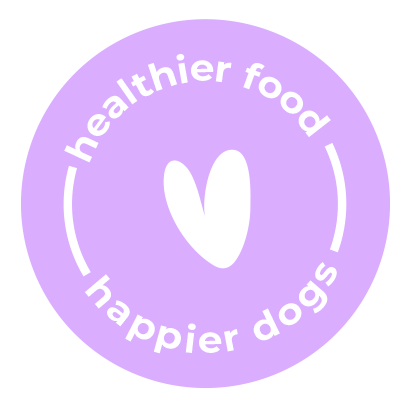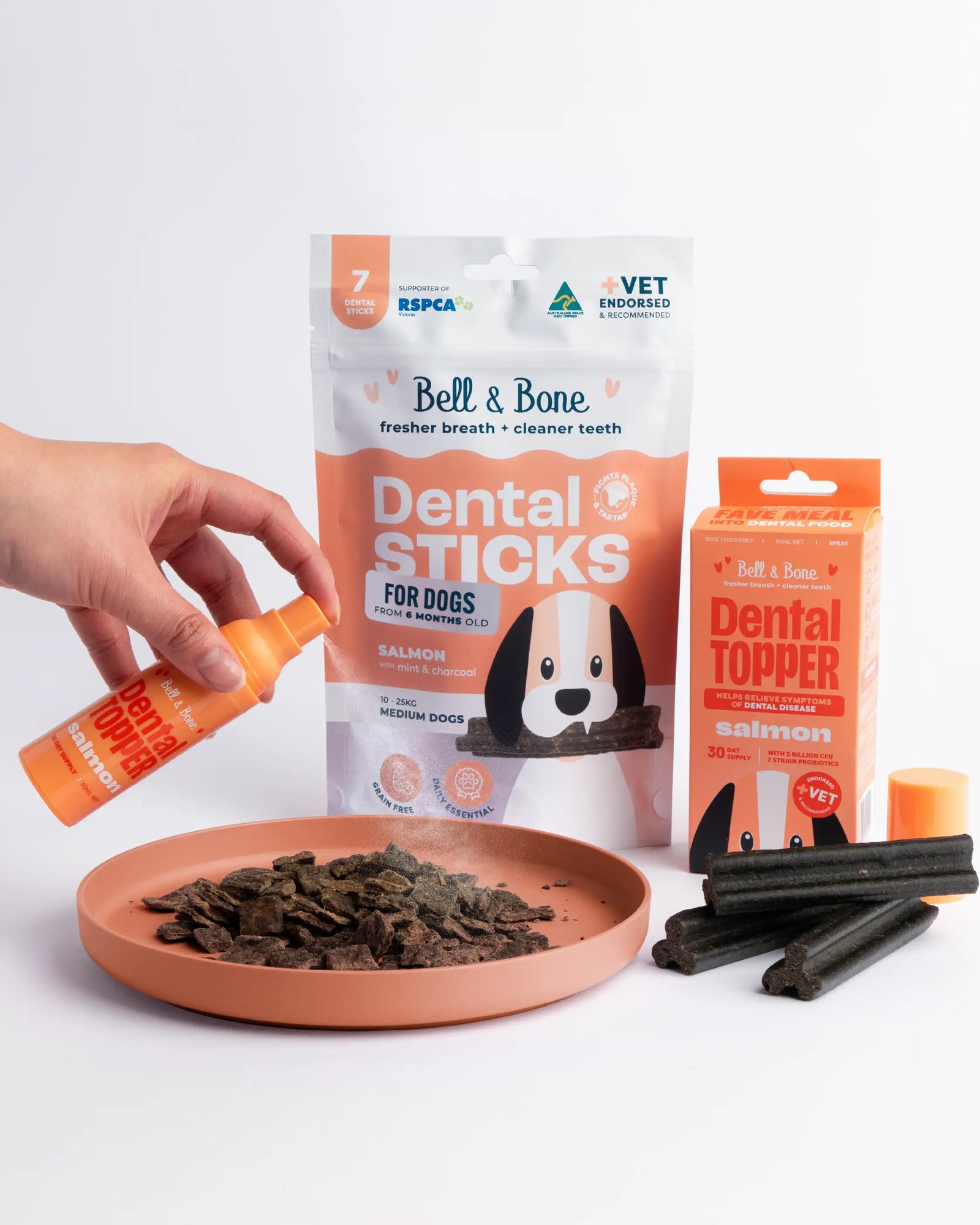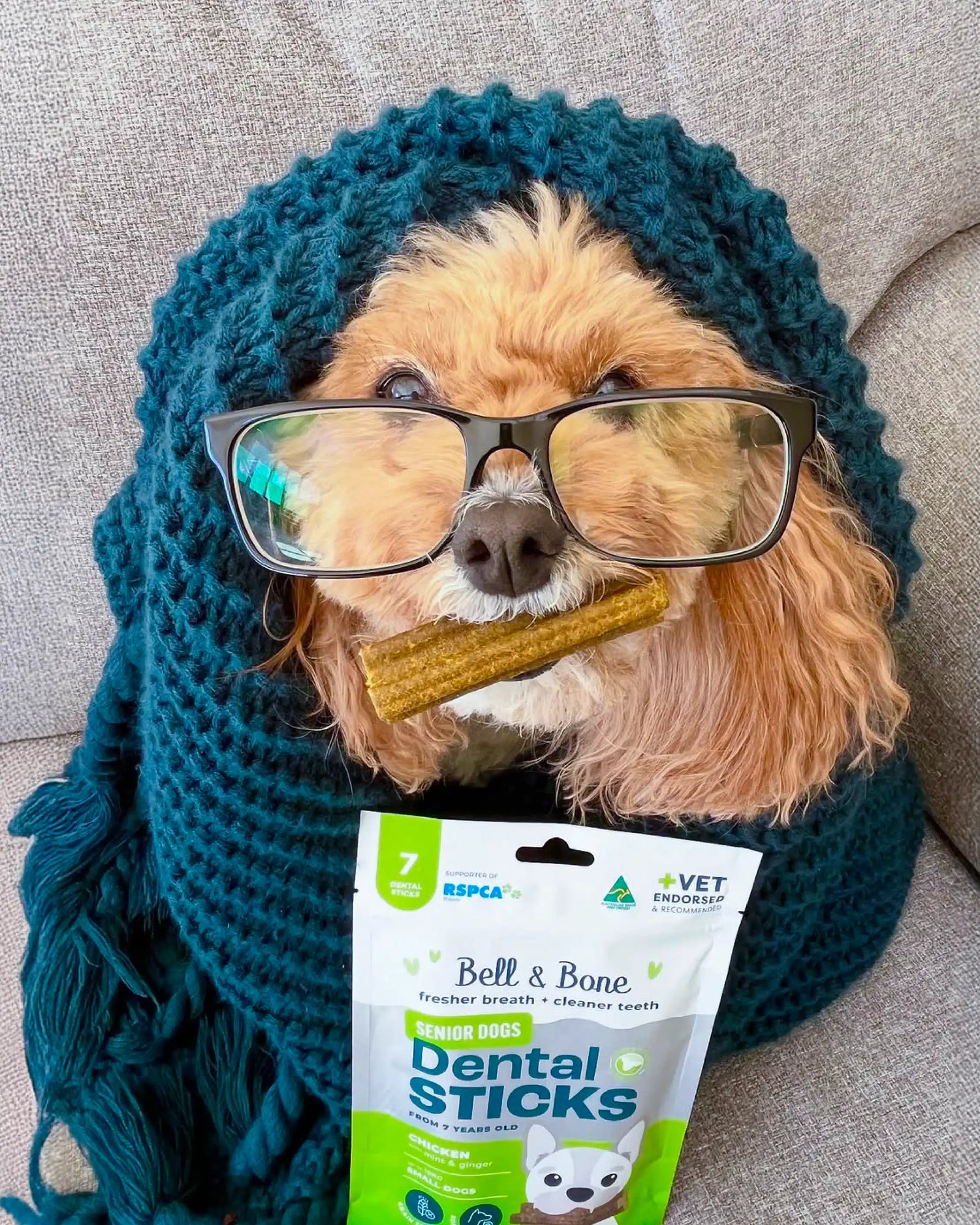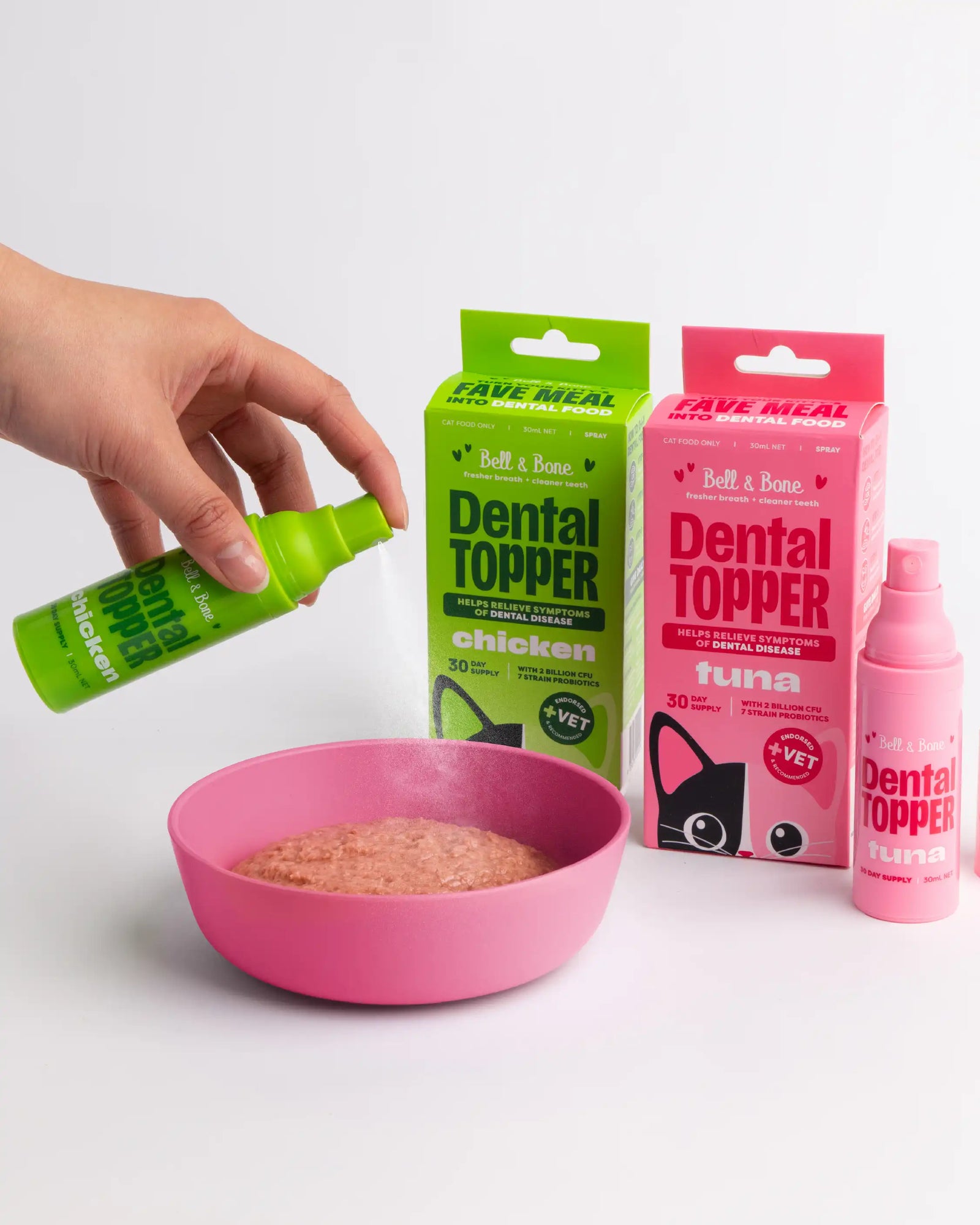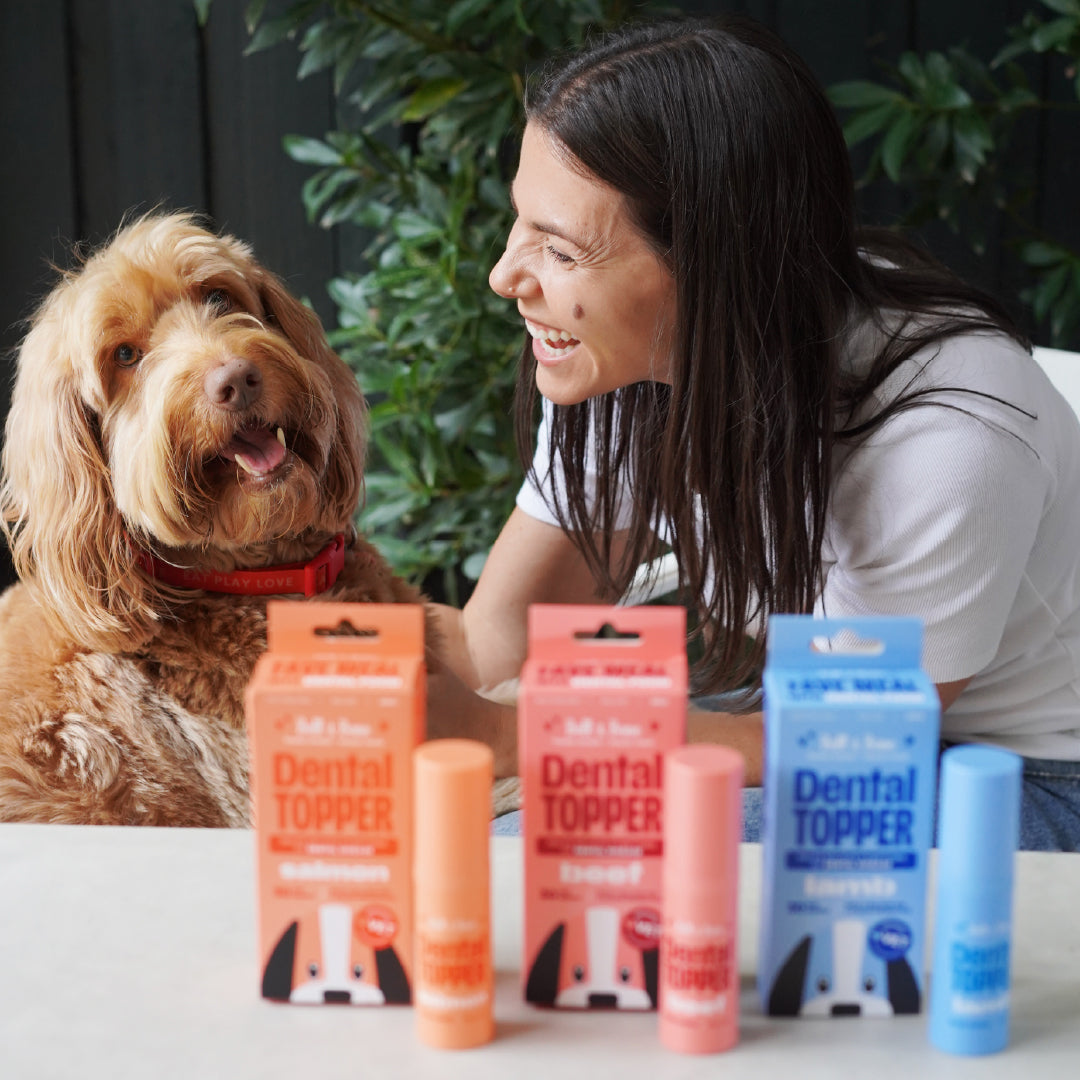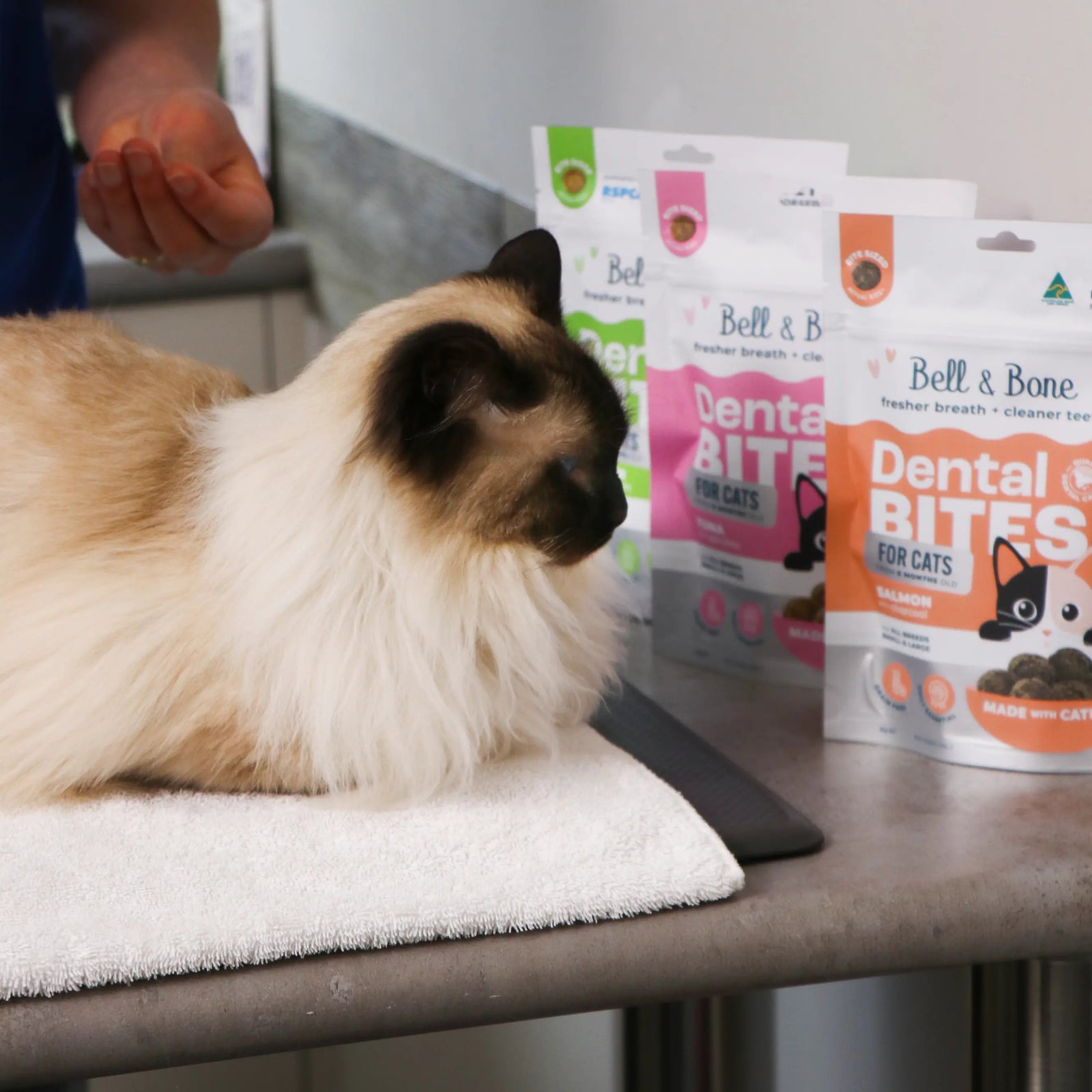How Many Treats Are Too Many for My Dogs
Deciding how many treats to give our pets can often seem like one big grey area. Without an expert by our side helping us decide which treats to buy, at what times of the day to give them and how many are too many in one sitting, it feels like a bit of a 'free-for-all' situation.
As loving pet owners, we look to give our furry companions the best care, seeking out information that empowers, educates, and supports us in our decision-making. We want to feel confident that our choices on their behalf are well-informed and tailored to their unique needs, characteristics, and lifestyle. This really comes down to knowing your pup and your products to strike a well-balanced diet and routine. With so much sponsored advertising and conflicting information online, this process can often become overcomplicated.
With this in mind, we've covered the most commonly asked questions relating to dog treats. You'll learn why we recommend natural, superfood dog treat alternatives to processed, low-quality ingredients, how many treats to give, and the benefits of purposeful dog treat. If your dog has special dietary requirements or preexisting conditions, consult a professional.
1. Which dog treats should I choose?

When deciding on a dog treat range, you want to find natural products that contain raw nutrition. This is because your pup's digestive system isn't built to break down grains, preservatives, sugars, and other chemically-processed ingredients. It's built to survive on whole animals (bones and organs included) and the foods within their stomachs like vegetables, fruits, and plants. Yes, your little angel is actually an omnivore. They don't hunt for 'chicken flavoured' animals; they hunt for protein and sustenance. Our recipes are outcome-based, rather than flavoured, for the simple reason that you want to know how it'll affect your pup's health. You can choose options for healthy coats, balanced bellies, an outer glow, or increased energy levels for super active dogs.
You also want to find out how the food is processed into treat form. Freeze-dried and raw treats are the best way to ensure your pup is getting all the right nutrients as they involve a simple process of moisture and bacterial content removal. This is different from dehydrated dog biscuits and jerky that traditionally go through a cooking process, losing about 65% of their nutritional value.
2. Are dog treats fattening?
That's a tricky question. Treats that are high in starchy carbohydrates are considered risk factors for obesity and insulin resistance in pets when eaten too frequently or in large portions. The cleaner, more natural, and nutrient-rich the treat, the better it is for your pup's diet. We recommend low-fat, grain-free, high-protein options, like our Freeze-Dried Kangaroo, Spinach, and Kelp range, because they contain less Freeze-Dried Kangaroo, Spinach, and Kelp range, because they contain less of the nasties and are small in size (perfect for positive reinforcement!).
In terms of how many treats to give your pet, the general rule of thumb is that dog treats should account for no more than 10% of your pup's daily calories. This is because, surprise, more food means that your dog has more energy to burn off. While we all want to be the 'good cop' parent that never says 'no,' you have to know when to make the hard calls. Your dog will still love you regardless. Being mindful of your pets' daily calorie intake is easier if you know the ingredients in the food your pets are eating.
3. Can dogs get sick from eating too many treats?

There are two main issues that can result from giving your pets too many treats. The first and perhaps most obvious issue is that too much of a good thing can quickly turn into a bad thing. If the treat-to-food ratio is off, your pet might not be getting all of the essential food groups in its daily food intake. As explained above, dog treats should account for no more than 10% of your pup's daily calories (see question 2). The specific number of treats your dog should have each day will depend on its breed, size, age, and activity level. With Bell Bone freeze-dried and dental treats, you'll find very low fat and sodium content. They also don't contain any nasties like wheat, fillers and added sugars. These snacks come in small sizes and can be broken in half easily for moderated portions, meaning that you won't feel guilty for spoiling your pup.
The other issue that arises from giving your dog too many treats is that it will expect them for positive reinforcement. As with most things, discipline is key. On the flip side, if you're using treats for training purposes, too many rewards can result in the treats becoming less effective. They lose their allure and become an everyday kind of thing. For this reason, consider choosing small-sized treats and being judicious in handing them out.
4. Can dogs get addicted to treats?
Like humans, dogs can get addicted to salts, sugars, and complex carbs that are found in popular treats. It's no secret that some dog food manufacturers include sugar in their products for the very reason that it's palatable and addictive for dogs. Ultimately, a happy dog translates to a returning customer. Cereal, rice, corn, and other grains are commonly found ingredients in commercial dog treats containing little to no nutritional value. As discussed in Question 1, your dog is an omnivore, not a cereal eater. With Bell Bone, we follow a no-grain approach for healthy, nutritional snacks that are digested naturally by our furry friends.
5. Can puppy treats cause diarrhoea?

It's not uncommon for puppies to experience diarrhoea with treats containing wheat, fillers, and preservatives. These cereal offenders (pardon the pun) can cause upset stomachs due to their incompatibility with a traditional omnivore diet. If you're not able to pinpoint the problem, consider if beef, lamb, or chicken-containing foods are common denominators with tummy upsets. These are typical allergens for dogs with sensitive tummies. An elimination diet always does the trick if you want to identify the cause of discomfort and cut it out for good.
With new treats and food, we recommend going slow. Start with small amounts on the first day and gradually increase. This will help you identify whether your pup's diarrhoea is a result in the change in diet.
6. How many Bell Bone treats should I give my dog per day?
The number of treats your dog should have each day will depend on its breed, size, age, and activity level. Something to note is that Bell and Bone is a treat; it should be fed as a snack, not to replace meals. The following guide is intended for dogs with regular exercise and a healthy weight.
Small Dogs
- Superfood Dog Treats: 3-4 dog treats per day
- Freeze-Dried Raw Dog Treats: 2-3 treats per day
- Dental Sticks: 1 stick daily for dogs under 10kg
Medium Dogs
- Superfood Dog Treats: 5-6 dog treats per day
- Freeze-Dried Raw Dog Treats: up to 3 treats per day
- Dental Sticks: 1 stick daily for dogs 10-25kg
Large Dogs
- Superfood Dog Treats: 7-9 dog treats per day
- Freeze-Dried Raw Dog Treats: up to 4 treats per day
- Dental Sticks: 1 stick daily for dogs 25kg+

Being a dedicated dog owner often involves asking the right questions, seeking the right advice, and, most importantly, checking in with your pup to make sure that it's healthy and happy. When in doubt or the event of health concerns, always consult a professional. Head to our FAQs page for more answers to dog treat-related questions. If you have any other questions, please feel free to get in touch with me, and I'll make it a priority to keep you informed and empowered.


